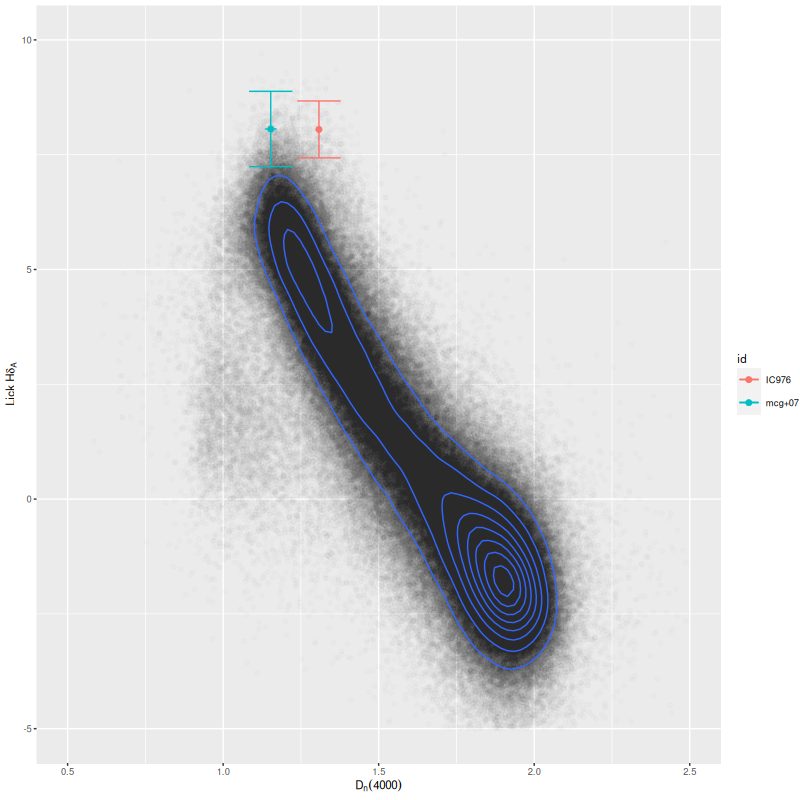I just have a quick comment about my last two subjects. I mentioned both of them have exceptionally strong Balmer absorption as measured by the Lick index HδA. They also have similar 4000Å break strengths:
- IC 0976: Dn4000 = 1.308±0.005, HδA = 8.05±0.31
- MCG +07-33-040: Dn4000 = 1.153±0.009, HδA = 8.06±0.41
For context here’s a variation of the same plot I’ve shown several times of the MPA-JHU measurements for a large sample of SDSS galaxy spectra with their locations overlaid:

Both galaxies have HδA indexes near the upper limits of any measurements in SDSS, and both are clearly in the post-starburst area of the HδA-Dn4000 plane. Depending on your interpretation of the 4000Å break strength index IC 976 could be slightly older or have a slightly lower specific star formation rate, but the difference is small. Using the toy evolutionary models that people often use these two galaxies could easily be at slightly different stages of the same evolutionary trajectory.
In fact though the detailed star formation history models show rather different trends over the last ~Gyr, with recall MCG+07-33-040 having a more extended and more recently terminated period of enhanced star formation than IC 976, while the latter had considerably more stellar mass added by the starburst.
This nicely illustrates a point I raised 3 posts ago, which is that this particular pair of indexes can’t break the “burst age – burst mass” degeneracy. Full spectrum fitting with non-parametric star formation histories potentially can. I’m still not prepared to take these models too literally.
